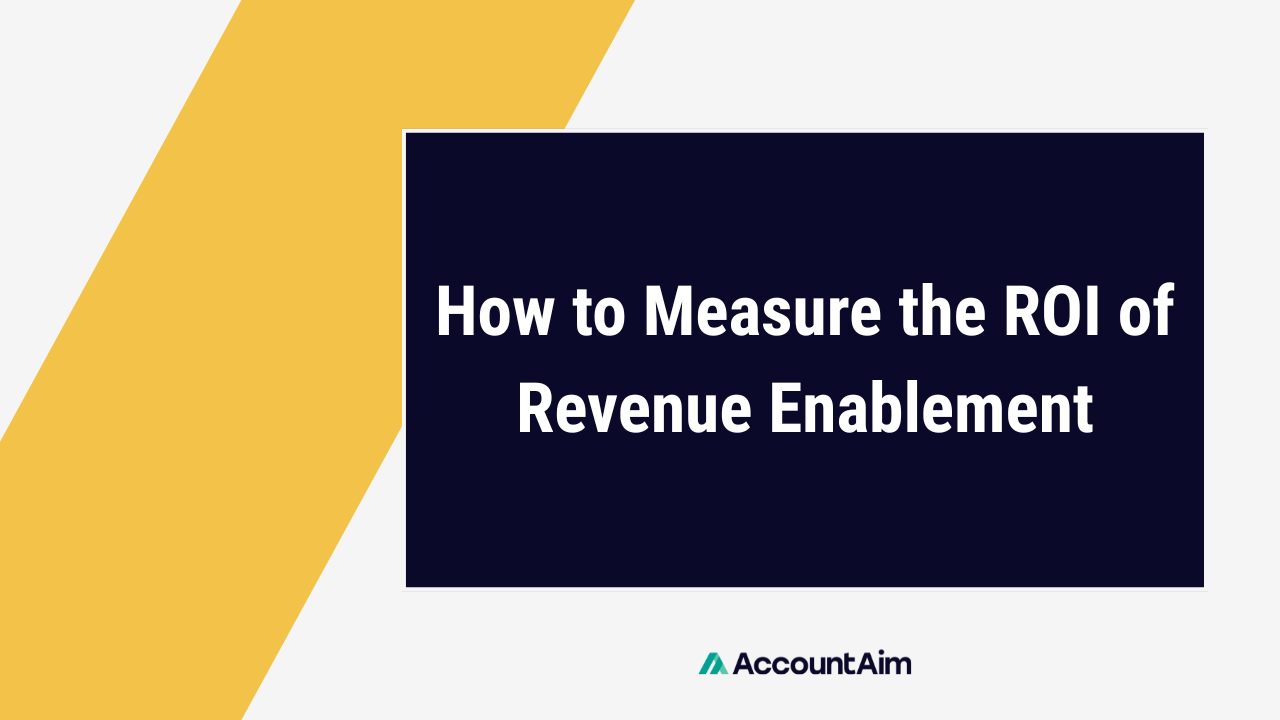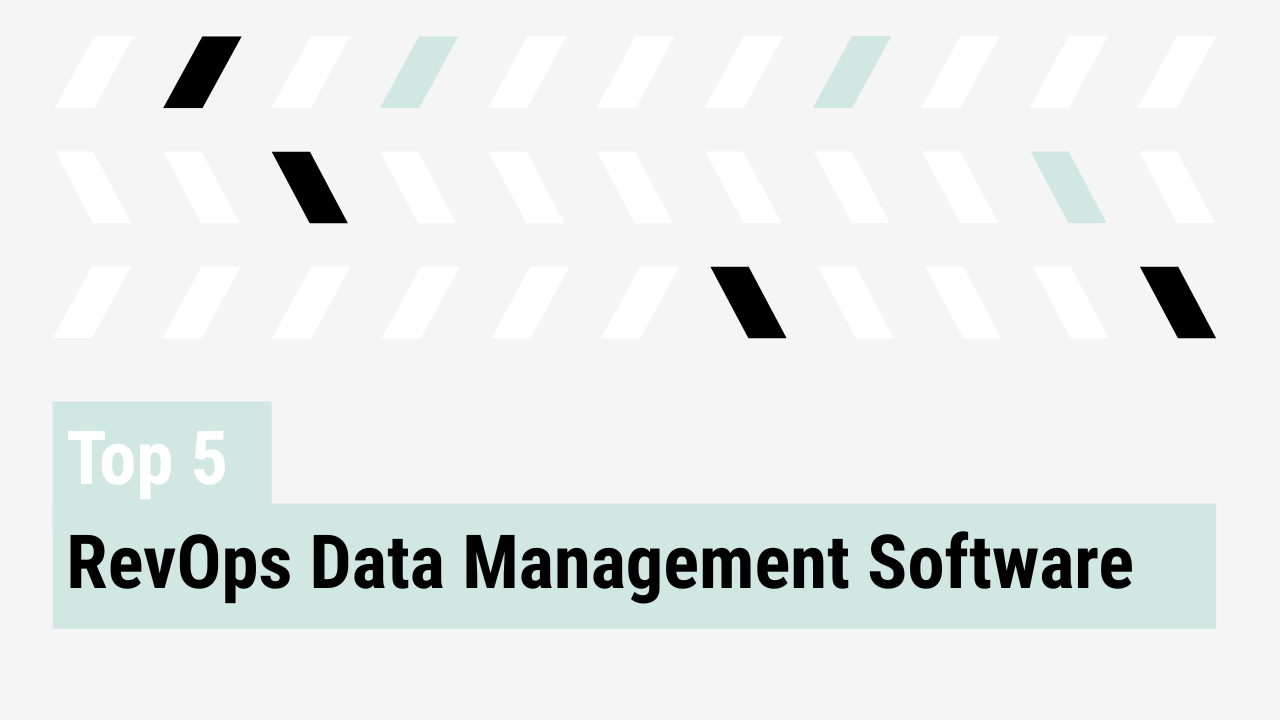Every GTM leader knows enablement is essential. Training, onboarding, and content programs keep reps productive and customers engaged. But when the CFO asks, “What’s the ROI?” the answer is often fuzzy. Without a clear measurement model, enablement risks being seen as a cost center rather than a growth driver.
Why measuring enablement ROI matters
Budgets are under greater scrutiny than ever. CROs and CFOs want hard evidence that enablement drives revenue. At the same time, GTM leaders face competing priorities across sales, marketing, and customer success. Without ROI data, enablement initiatives are easy targets for cuts. RevOps and enablement teams share the same mission: improve revenue performance. By aligning around ROI, they gain credibility and secure the investment needed to scale.
A framework for ROI measurement
The most effective way to measure ROI is with a tiered framework that links activity to outcomes:
- Program inputs: training hours, onboarding modules completed, content accessed, coaching sessions held
- Behavioral outputs: rep adoption, ramp speed, content usage, pipeline coverage, sales cycle velocity
- Business outcomes: win rates, quota attainment, deal size, expansion revenue, retention
This ensures every metric ladders up logically to revenue, rather than stopping at vanity stats.
Core metrics to track
Different enablement programs require different KPIs, but a complete scorecard usually spans six categories.
| Category | Example Metrics | Purpose |
|---|---|---|
| Onboarding & productivity | Time-to-first-deal, time-to-full-ramp, early attrition rates | Quantify how training accelerates productivity |
| Sales performance | Win rate, quota attainment, revenue per rep, average deal size | Link enablement directly to selling effectiveness |
| Pipeline & velocity | Stage conversion rates, deal cycle length, pipeline coverage | Show how enablement removes friction in the funnel |
| Content impact | Usage and adoption, buyer engagement, correlation with closed-won deals | Validate which assets influence outcomes |
| Efficiency & cost | Cost per trained rep, enablement spend vs. incremental revenue, savings from reduced ramp time | Position enablement as a driver of efficiency |
| Qualitative feedback | Rep confidence, manager coaching feedback, content relevance surveys | Capture sentiment and adoption where data is thin |
ROI calculation
The standard formula for enablement ROI is simple but powerful:
ROI = (Financial Benefits − Program Costs) / (Program Costs) × 100%
Where:
- Financial Benefits may include revenue uplift, improved retention, shorter sales cycles, or cost savings.
- Program Costs include training development, delivery, content creation, and tech stack investments.
Example: if a training program costs $250,000 and leads to $1,000,000 in incremental revenue and savings, the ROI is 300%.
Attribution tactics that prove impact
The hardest part of enablement measurement is attribution. Did training actually move the needle, or did other GTM factors play a bigger role? Some effective tactics include:
- Cohort comparisons: compare trained vs. untrained reps, or teams with and without content support
- Incrementality models: measure improvements relative to a baseline rather than raw outcomes
- Multi-touch attribution: account for enablement as one input in a longer GTM journey
- Content-to-deal mapping: track which assets appear most often in closed-won opportunities
- Unified data: integrate CRM, LMS, and content systems to avoid fragmented reporting
Pitfalls to avoid
It’s important to watch closely for potential pitfalls because even well-designed measurement programs can be undermined by blind spots. Spotting them early allows leaders to correct course before credibility or momentum is lost. Warning signs often include metrics that look impressive but don’t connect back to revenue, reporting that varies across teams due to siloed systems, or results that shift dramatically depending on the timeframe analyzed. Building in regular reviews and stress-testing assumptions can help surface these issues quickly.
Common challenges include:
- Lagging impact: ROI may take a quarter or more to appear; set expectations upfront
- Data silos: disconnected systems make attribution nearly impossible
- Vanity metrics: activity counts like downloads or hours trained don’t prove business value
- Small sample sizes: weak signals require triangulation across multiple metrics
Emerging trends in ROI measurement
Paying attention to these emerging trends is critical because they signal where the discipline of enablement measurement is heading. Leaders who anticipate and adapt to these shifts are more likely to stay ahead of stakeholder expectations, secure long-term buy-in, and avoid being caught off guard by new standards of accountability.
Enablement measurement is evolving. Trends to watch:
- Causal attribution models that isolate enablement impact with more rigor
- Expansion and retention focus, proving enablement’s role in renewals and customer lifetime value
- Dynamic investment allocation where analytics direct enablement spend where it creates the most lift
- Closer RevOps–Enablement integration, with shared ownership of metrics and reporting
Takeaway
Measuring enablement ROI means creating a credible, repeatable way to show how programs contribute to revenue outcomes. Leaders who adopt structured frameworks, relevant metrics, and rigorous attribution models not only justify investment, but also elevate enablement as a proven growth engine. The best approach is to start small. Prove ROI on one program or cohort, then expand. Over time, enablement becomes both supportive of revenue and directly accountable for driving it.



